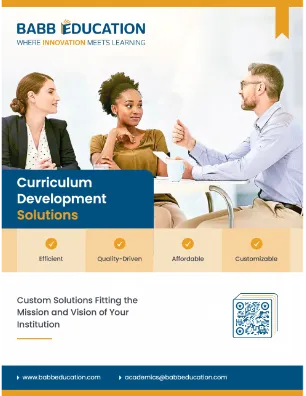When universities approach instructional design teams they often have specific expectations about what a new course should achieve. While these requests can vary based on institutional needs and course objectives, several common themes emerge across the board.
In this blog, we’ll explore the top five things university clients frequently ask for in their new course designs and discuss why these elements are essential to creating effective, student-centered learning experiences.
- Engaging and Interactive Content
One of the most common requests from our university clients is for course content to be engaging and interactive. Traditional lecture-style teaching, while still valuable, is often seen as less effective in keeping students motivated and actively involved in the learning process. Universities are increasingly looking for ways to incorporate multimedia elements, simulations, case studies, and hands-on activities that create a dynamic learning experience.
Why It Matters: Engagement is a key driver of student success. By integrating multimedia, group work, and real-world applications into course design, instructional designers can enhance student participation, making learning more enjoyable and effective.
Key Strategies to Implement:
- Use Multimedia Resources: Incorporate videos, podcasts, and infographics to break up text-heavy content.
- Include Discussion Boards and Peer Reviews: Facilitate student interaction and collaboration.
- Use Gamification: Use game-like elements such as quizzes, badges, or challenges to motivate students.
- Accessibility and Universal Design for Learning (UDL)
Universities are deeply committed to providing equitable learning opportunities for all students, regardless of ability or background. As a result, they often ask that new courses adhere to principles of accessibility and Universal Design for Learning (UDL). This means ensuring that course materials are accessible to students with disabilities and that the design allows for multiple means of representation, engagement, and expression.
Why It Matters: Accessibility is not just a legal requirement under the Americans with Disabilities Act (ADA); it’s an ethical imperative. Additionally, by incorporating UDL principles, courses can meet the diverse needs of learners, including those with different learning preferences or challenges such as language barriers or cognitive differences.
Key Strategies to Implement:
- Closed Captions and Transcripts: Ensure all video and audio content is accompanied by captions and written transcripts.
- Alternative Formats: Provide materials in multiple formats (e.g., text, audio, video) to support different learning preferences.
- Accessible Technology: Use learning management systems (LMS) that support screen readers and other assistive technologies.
A well-designed course should eliminate barriers to learning, making content approachable and meaningful for every student.
- Real-World Application and Career Relevance
Students, in higher education, want to know how their courses will prepare them for the workforce. University clients frequently ask for course designs that not only deliver academic knowledge but also provide real-world applications and career-relevant skills. This is especially important in disciplines like business, healthcare, engineering, and technology, where hands-on experience and applied knowledge are key to success.
Why It Matters: Connecting coursework to real-world scenarios increases student motivation and prepares them for future employment. Moreover, practical, problem-solving skills are among the top competencies employers seek. Universities are, therefore, under pressure to offer courses that align with industry needs and equip students with the tools to succeed in their chosen careers.
Key Strategies to Implement:
- Case Studies: Integrate case studies that reflect current industry challenges and encourage students to apply theoretical knowledge to practical problems.
- Project-Based Learning (PBL): Design assessments that require students to complete real-world projects, such as business plans, research proposals, or product designs
- Guest Speakers and Industry Experts: Invite professionals to speak about trends, tools, and techniques in their fields.
By embedding career relevance into course content, instructional designers can create programs that offer immediate value to students, increasing their employability post-graduation.
- Flexibility and Asynchronous Learning Options
With the rise of online education and the growing demand for flexible learning environments, university clients increasingly request courses that offer both synchronous (live) and asynchronous (self-paced) learning options. This hybrid model caters to diverse student populations, including working professionals, international students, and those who need to balance school with other life responsibilities.
Why It Matters: Flexibility is crucial for accessibility and student satisfaction. Offering asynchronous elements can reduce stress, allow for better time management, and provide a more inclusive learning environment for students with different schedules or learning speeds.
Key Strategies to Implement:
- Recorded Lectures: Provide pre-recorded video lectures or microlearning modules that students can access at any time.
- Modular Design: Break the course into self-contained units or modules, so students can progress at their own pace.
- Flexible Deadlines: When possible, offer flexible assignment deadlines to accommodate different student needs.
This approach not only supports student autonomy but also improves overall course accessibility.
- Robust Assessment and Feedback Mechanisms
Another top priority for university clients is the design of effective assessment strategies. Gone are the days when final exams and papers were the only ways to measure student progress. Today’s university clients want assessments that provide ongoing feedback, reflect real-world skills, and encourage deeper learning. This includes formative assessments (ongoing checks for understanding) as well as summative assessments (final evaluations)
Why It Matters: Effective assessments are critical to student success. They not only measure learning outcomes but also help students identify areas for improvement and provide instructors with valuable insights into student performance. Moreover, timely and actionable feedback is essential for keeping students on track and engaged.
Key Strategies to Implement:
- Frequent Low-Stakes Assessments: Use quizzes, reflection papers, or interactive activities to provide regular feedback without high-pressure stakes.
- Rubrics and Clear Criteria: Develop detailed rubrics that outline expectations and grading criteria for all major assignments.
- Peer and Self-Assessment: Encourage students to engage in peer review or self-assessment activities, fostering critical thinking and reflection.
A well-rounded assessment strategy ensures that students have multiple opportunities to demonstrate their understanding and receive meaningful feedback.
When universities seek instructional design services for new course development, they have clear and forward-thinking priorities. Engaging content, accessibility, real-world applications, flexibility, and robust assessments are among the top requests. By focusing on these five key elements, instructional designers can create courses that not only meet institutional goals but also foster deeper learning, student satisfaction, and success.
Ultimately, the goal is to design courses that are not just repositories of knowledge but dynamic, inclusive spaces where students can thrive academically and prepare for their futures. As higher education continues to evolve, these design priorities will remain central to delivering high-quality educational experiences
Reach out to Babb Education today, today to learn about how we can partner with you to create dynamic online courses for your institution.



